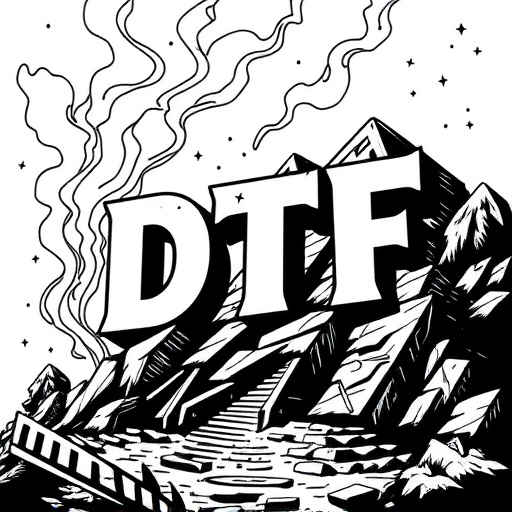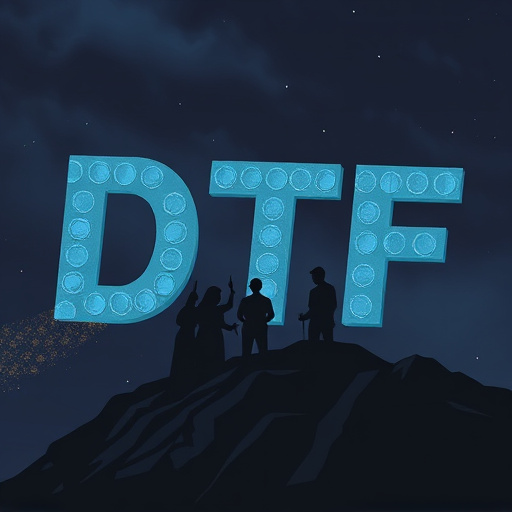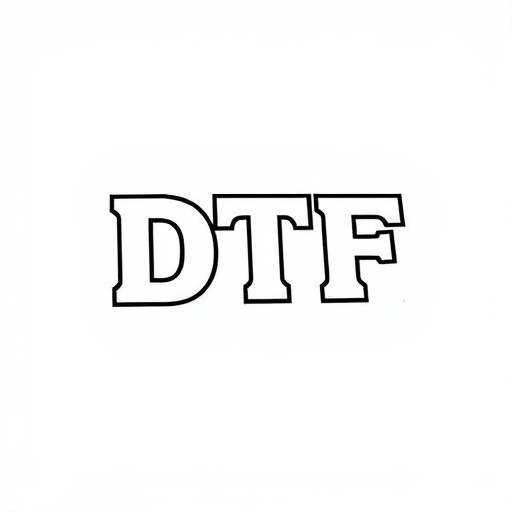Direct-to-Film (DTF) Transfers offer unparalleled quality and versatility in printing, preserving intricate details and vibrant colors on diverse materials. Pre-production planning involves understanding source material (old films, videos, or digital files), assessing their quality and format, and making crucial decisions on resolution, aspect ratio, and color grading. Choosing the right film stock and equipment is vital; using high-quality gear ensures precision in capturing details and vibrancy. Meticulous technical planning, including calibrating camera settings, selecting appropriate resolutions, and controlling lighting, is essential for optimal outcomes. Post-processing involves color grading, special effects, and final touches to enhance visual appeal and accuracy. Best practices include using archival materials, proper storage conditions, regular inspections, and comprehensive documentation for long-term preservation of DTF transfers.
Direct-to-film (DTF) transfers offer a unique and authentic way to preserve and share visual content. This article provides comprehensive guidelines for mastering the art of DTF applications, from pre-production planning to post-processing techniques. We’ll explore essential steps, including choosing the right film stock and equipment, ensuring technical accuracy, and adopting best practices for longevity. By following these principles, filmmakers can achieve exceptional results, preserving the essence of their work for generations to come, all while leveraging the captivating aesthetics of DTF.
- Understanding Direct-to-Film Transfers (DTF): A Brief Overview
- Pre-Production Essentials for DTF Applications
- Choosing the Right Film Stock and Equipment
- Technical Considerations for Optimal Results
- Post-Processing and Final Touches in DTF
- Best Practices for Longevity and Preservation of DTF Transfers
Understanding Direct-to-Film Transfers (DTF): A Brief Overview

Direct-to-Film Transfers (DTF) is a cutting-edge process that revolutionizes traditional printing methods by enabling high-quality imaging directly onto various substrates, including film and paper. This innovative technique has gained popularity among professionals in fields like photography, fine art, and even marketing due to its ability to produce stunning visual effects.
Understanding DTF involves comprehending its unique process. Unlike indirect methods, where ink is transferred from a medium to a substrate, DTF involves direct application of the image onto the final material. This approach ensures exceptional detail preservation, vibrant colors, and a wide range of material compatibility. With DTF, artists and creators can achieve intricate designs, fine lines, and rich textures, making it an ideal choice for both artistic expression and commercial applications.
Pre-Production Essentials for DTF Applications

Before embarking on a direct-to-film (DTF) transfer project, several pre-production considerations are essential to ensure optimal results. The first step involves gathering and understanding the source material—whether it’s old films, video tapes, or even digital files—as this will dictate the entire process. It’s crucial to assess the quality, format, and condition of the sources, as these factors influence the final output significantly. For instance, older films might require specialized handling and preservation techniques to maintain their integrity.
Additionally, crafting a detailed plan is vital. This includes deciding on the desired resolution, aspect ratio, and color grading for the transfer. A well-thought-out script or storyboard can guide the process, ensuring every frame is captured as intended. It’s also important to select the right equipment, such as high-quality scanners and cameras, to capture the detail and vibrancy of the original material accurately.
Choosing the Right Film Stock and Equipment

When embarking on a direct-to-film (DTF) transfer project, selecting the appropriate film stock and equipment is paramount to achieving high-quality results. The first step involves choosing the right film type based on your desired outcome. Different films have unique characteristics, such as grain structure, dynamic range, and color saturation, which can significantly impact the final image. For example, fine-grain films tend to produce sharper images with more detail while coarse-grain films offer a softer look, ideal for certain artistic effects.
Equally important is investing in compatible equipment, including cameras, developing tanks, and chemicals. Using modern gear designed specifically for DTF transfers ensures precision and consistency throughout the process. High-quality cameras with manual controls allow for meticulous exposure adjustments, while specialized developing tanks provide precise temperature control, which is crucial for consistently delivering optimal results.
Technical Considerations for Optimal Results

Direct-to-film (DTF) transfers require careful technical considerations to achieve optimal results. The first step involves ensuring your source material is of high quality, with clear and sharp images. This includes proper calibration of your camera settings during capture to match the desired film stock characteristics. Resolution and aspect ratio should also be carefully chosen; higher resolutions offer greater detail but might increase file sizes, while maintaining the original aspect ratio preserves the intended composition.
Lighting is another crucial element. Soft, diffused lighting is generally preferred to avoid harsh shadows and unnecessary noise in the transfer. Color balance and temperature must be precisely set to match the film’s look, often requiring a color grading process. Additionally, post-processing techniques like noise reduction and edge enhancement can improve visual clarity but should be applied judiciously to maintain authenticity.
Post-Processing and Final Touches in DTF

After completing the direct-to-film (DTF) transfer process, post-processing and final touches are essential to ensure the best possible outcome. This step involves a range of techniques to enhance and refine the transferred image, making it ready for printing or digital display. One key aspect is color grading, where skilled technicians adjust colors, contrast, and brightness to achieve a visually appealing and accurate representation of the original material. This process requires an expert eye to preserve the film’s unique aesthetics while also meeting modern visual standards.
Additionally, various special effects can be applied to add depth and dimension. This may include adjusting grain, adding subtle noise, or even incorporating vintage-style post-processing effects to mimic the look of traditional film techniques. These final touches not only enhance the visual appeal but also contribute to the overall authenticity and character of the DTF piece, ensuring it stands out as a unique and high-quality production.
Best Practices for Longevity and Preservation of DTF Transfers

To ensure the longevity and preservation of Direct-to-Film (DTF) transfers, several best practices should be followed. One key aspect is to use high-quality materials and equipment throughout the process. This includes selecting archival-grade film stocks, precision tools for exposure and development, and proper storage containers that protect against light, moisture, and dust. Additionally, maintaining consistent temperature and humidity levels in the environment where the transfers are stored is crucial to prevent degradation over time.
Regular maintenance and inspection of the transferred films are also essential. This involves checking for any signs of damage, such as scratches or fading, and promptly addressing them. Implementing a system for proper documentation, including detailed records of transfer conditions, equipment used, and storage practices, can significantly aid in future preservation efforts. These measures collectively contribute to preserving the integrity and quality of DTF transfers for generations to come.














